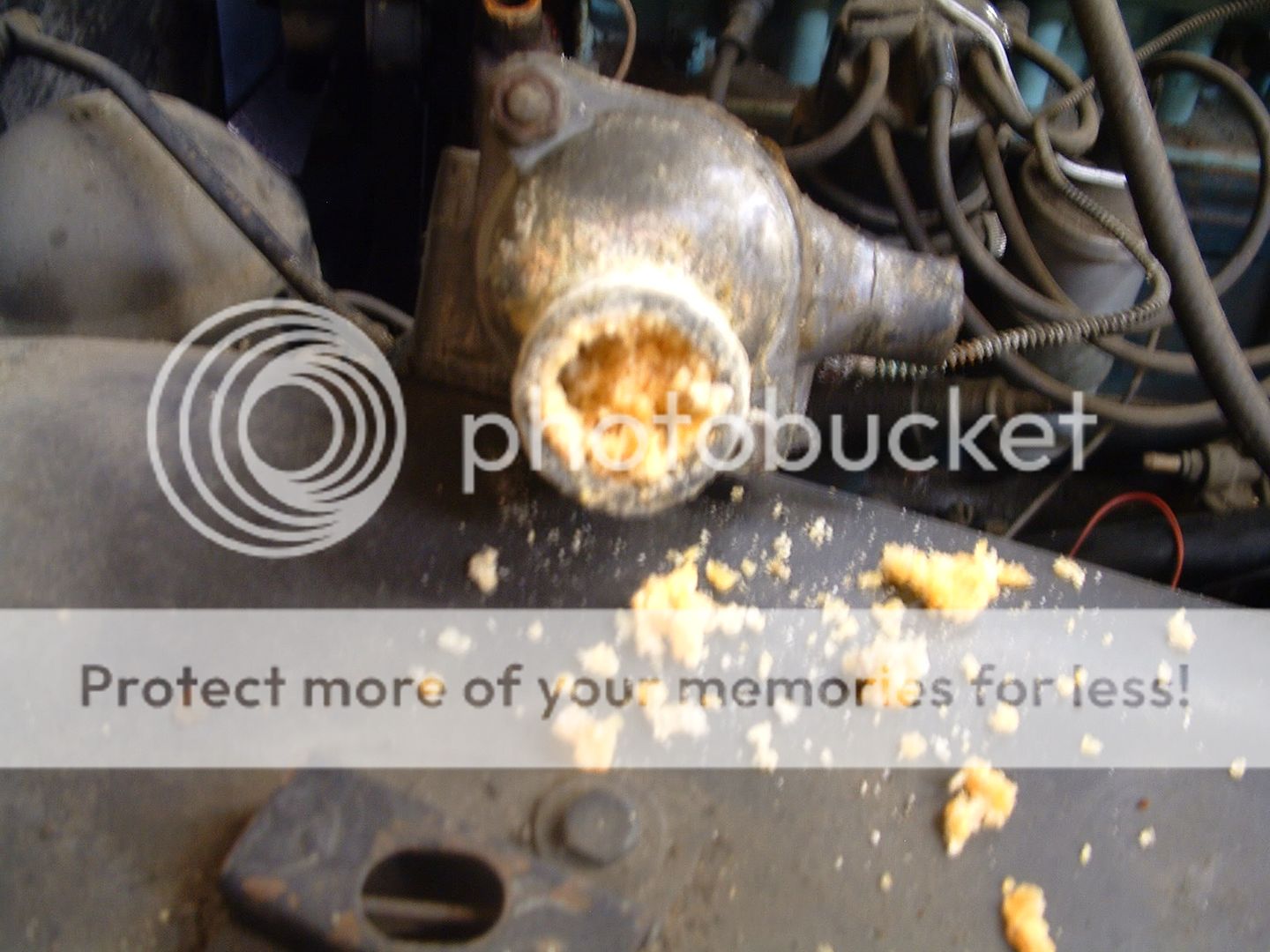Aloha David,
Here is a procedure to statically set up initial timing with your Pertronix. It has been compiled from several sources and with help from fellow BCF members.
TR Ignition Timing
Ignition timing is a poorly understood, very important and a frequently done wrong part of a tune up. While most distributors are designed to be timed with a strobe or an electronic timing light and running, the TR distributor is designed to be timed with a static light and with the engine stopped. If a Triumph 2 or 3 is timed with a strobe while running all you will get for your trouble is a poor running engine with badly retarded ignition timing.
Procedure with stock contact breaker point ignition system:
1. Remove the coil to distributor low-tension lead at the distributor, usually located in the distributor base and next to the cylinder head. Connect a static light (any 12 volt lamp) between the distributor terminal and a convenient hot lead (the battery will do).
2. Using either the crank or by pulling the fan, move the pulley around in a clockwise direction as viewed from the front. Place the hole drilled in the rear half of the pulley 3/8” to the left of the timing pointer. The timing pointer is attached to the timing chain cover, just off to the right of the centerline as viewed from the front of the car. DO NOT turn the pulley in a counter clockwise direction, as the crankshaft motion is not directly transmitted to the camshaft due to the timing chain tensioner. The fan must be moved in a smooth and continuous movement clockwise to the correct location.
3. Loosen the clamp at the base of the distributor and very slowly turn the distributor in a counter clockwise direction until the static light just comes on and then clockwise until it just goes out. This is the exact point of ignition and it is possible that the light may come on as you tighten the clamp, making it necessary to readjust until the light just goes out. Then reconnect the low-tension lead and you are ready to go. 3/8” measured on the circumference of the crankshaft is about 8deg, which is more initial timing advance than the factory recommends, the engine however seem to run more effectively at 8deg than 4deg of advance. Original: Ken Gillanders, January 1985. Transcribed by: David Templeton, June 29, 2002
Procedure with Pertronix electronic ignition
1. Set the TDC hole in the fan pulley as described above.
2. Fully connect the Pertronix module, coil, etc.; then connect a test light as follows: remove the black wire off the coil, and connect your test lamp from the black wire (negative ground cars) and a 12V source. With the key on (power to the coil & Pertronix), the test light will be on when the Pertronix is "on" (equivalent to points closed) and the light will be off when the Pertronix is "off" (equivalent to points open). The test lamp will only require about 90 mA to power and shouldn't cause significant heating of the module. Adjust the distributor as described above. Rather than running back and forth to the ignition switch to limit the "on" time of the Pertronix module... I simply unplug its red wire which is connected to my coil (+) terminal. CAUTION when the Pertronix is powered, around 4 Amps is flowing continuously through the module and if it overheats can burn out. Pertronix tech support says that "too long" is about 5 minutes. To be safe, try to limit yourself to 3 minute. In normal running the duty cycle is reduced so overheating is not a problem. Provided by Randall (TR3Driver) and Doug Lawson from British Car Forum

 Hey there Guest!
Hey there Guest!
 smilie in place of the real @
smilie in place of the real @
 Pretty Please - add it to our Events forum(s) and add to the calendar! >>
Pretty Please - add it to our Events forum(s) and add to the calendar! >> 




 A friendly reminder - be careful what links you click on here. If a link is posted by someone you don't know, or the URL looks fishy, DON'T CLICK. Spammers sometimes post links that lead to sites that can infect your computer, so be mindful what you click.
A friendly reminder - be careful what links you click on here. If a link is posted by someone you don't know, or the URL looks fishy, DON'T CLICK. Spammers sometimes post links that lead to sites that can infect your computer, so be mindful what you click.